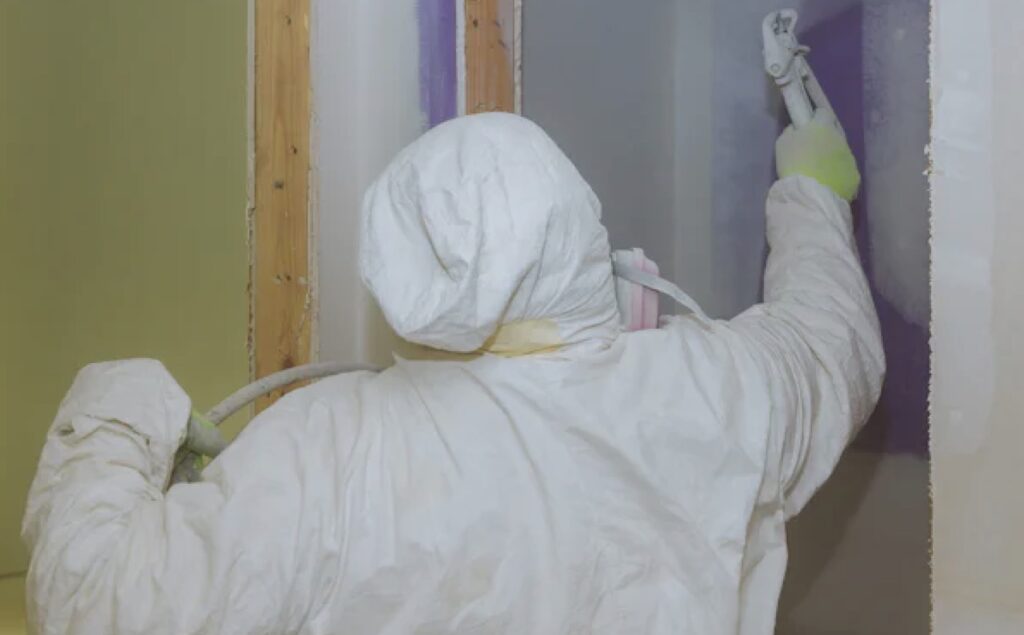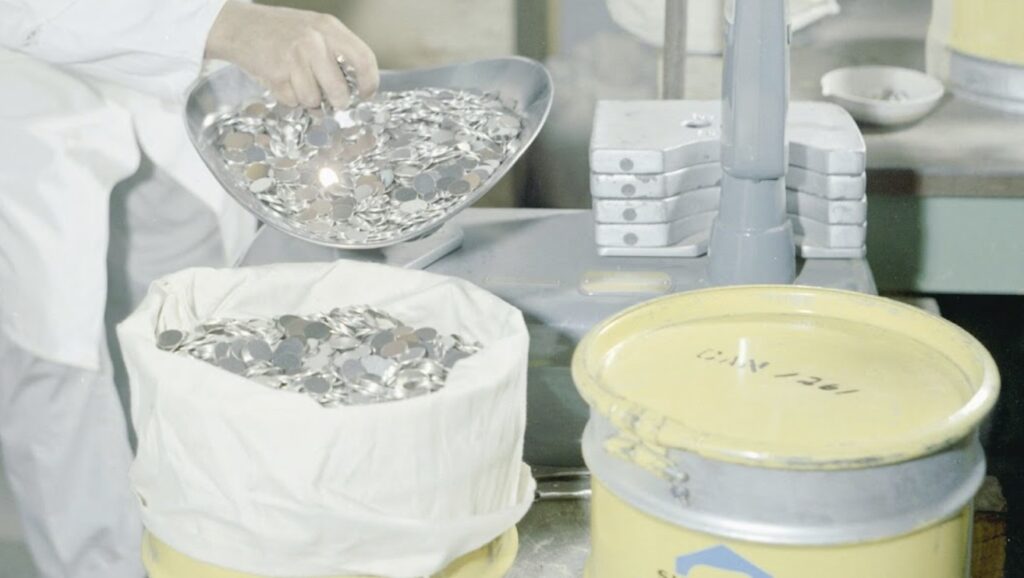Asbestos encapsulation is the process of applying a sealed coating or barrier over asbestos-containing materials (ACMs) to prevent the release of hazardous fibres. This method is typically used on bonded ACMs that are in stable condition and unlikely to be disturbed.
According to the Control of Asbestos Regulations 2012 (CAR2012) and outlined in the HSE’s HSG264 guidance, encapsulation is a legally compliant way to manage asbestos risks without full removal. It is particularly useful in settings where access, cost, or disruption make asbestos removal impractical.
Encapsulation vs. Removal of Asbestos: When and Why
Encapsulating asbestos aims to contain and stabilise ACMs rather than completely eliminate them. It’s an appropriate solution when materials are intact, non-friable, and located in low-traffic areas—for example, undamaged ceiling tiles in a school or commercial office.

In contrast, asbestos removal is required when ACMs are friable, damaged, or likely to be disturbed—such as deteriorating insulation around pipework. Choosing between asbestos encapsulation and asbestos removal depends on the ACM’s condition, future maintenance plans, and the surrounding environment.
Asbestos Encapsulation Process: A Step-by-Step Guide
The asbestos encapsulation process begins with a professional pre-encapsulation survey and risk assessment. A qualified asbestos surveyor evaluates the condition and accessibility of the ACMs and selects a suitable encapsulant based on material type, exposure risks, and environmental conditions.
Once the ACMs are approved for treatment, the surface is cleaned using damp methods or HEPA vacuums. Cracks and defects are repaired, and primers may be applied to enhance adhesion.
Encapsulants are then applied either by brush or spray, depending on surface accessibility and finish requirements. Manufacturers specify the number of coats and minimum layer thickness for each product. It’s crucial that environmental factors such as temperature and humidity are controlled to ensure proper bonding.
After application, adhesion and coverage are tested. The area is inspected visually and documented through a handover asbestos report, with photos and material data retained in the asbestos management plan.
Advantages of Asbestos Encapsulation
Encapsulation offers several practical and cost-effective advantages for managing asbestos-containing materials:
- Cost savings – Typically up to 50% cheaper than full asbestos removal.
- Minimal disruption – Allows buildings to remain occupied during the work, avoiding relocation or downtime.
- Preservation of features – Maintains original finishes in heritage or architecturally sensitive structures.
- Rapid emergency response – Quickly contains asbestos risks in the event of accidental damage or unexpected discoveries.
Limitations of Asbestos Encapsulation
Encapsulation coatings have a finite lifespan—typically between five and ten years—requiring periodic asbestos inspection and possible re-application. Over time, encapsulated ACMs can degrade beneath the surface, making asbestos condition assessments harder.
Asbestos encapsulation is not suitable for friable or extensively damaged materials and may complicate future renovations. If a wall or ceiling must later be drilled or removed, the presence of encapsulated asbestos could demand new asbestos surveys and licensed handling.
Materials and Methods: Choosing the Right Asbestos Encapsulant
Acrylic asbestos sealants offer flexibility and are suited to textured surfaces, while epoxy coatings provide a durable, chemical-resistant finish ideal for industrial sites. Elastomeric coatings accommodate building movement and are useful in areas prone to vibration.

In some settings, wrap-and-seal systems combine coatings with reinforcing layers. All products used should be UKAS-certified and matched to the ACM type using manufacturer datasheets and compatibility checks.
Asbestos Compliance and Duty-Holder Responsibilities in the UK
Under CAR2012, duty holders are permitted to use asbestos encapsulation as a risk control method, provided it is appropriately recorded and monitored.
All encapsulated ACMs must be noted in the asbestos management plan, and any encapsulation that forms part of larger notifiable work should be declared to the HSE. Duty holders are also responsible for maintaining asbestos inspection schedules and ensuring the encapsulant remains intact and effective throughout its lifecycle.
Cost of Asbestos Encapsulation
Asbestos encapsulation is priced between £20 and £50 per square metre, depending on surface complexity, access, and the type of encapsulant used. You can complete most asbestos projects in one to three days, which is faster and less invasive than removal.
Cost drivers include height, presence of voids, surface repairs, and the need for specialist access equipment. These factors should be reviewed during the initial site survey and asbestos risk assessment phase.
Maintenance & Asbestos Lifecycle Management
To ensure the long-term safety of encapsulated ACMs, follow these key asbestos maintenance and monitoring practices:
- Scheduled inspections – Conduct visual checks every 6–12 months to assess coating integrity and ACM condition.
- Record-keeping – Log inspection results in a digital or physical asbestos register, including dates, observations, and follow-up actions.
- Damage response – Re-coat areas showing signs of flaking, peeling, or wear; escalate to removal if the ACM is no longer stable.
- Use of digital tools – Employ inspection apps and photographic records to track condition changes and streamline compliance.
- Re-evaluation triggers – Reassess encapsulation strategy if building use changes or renovation works are planned that may disturb ACMs.
